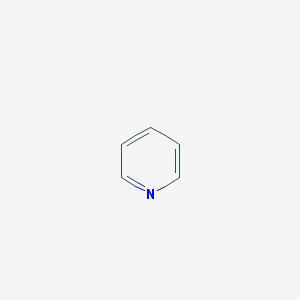-
Categories
-
Pharmaceutical Intermediates
-
Active Pharmaceutical Ingredients
-
Food Additives
- Industrial Coatings
- Agrochemicals
- Dyes and Pigments
- Surfactant
- Flavors and Fragrances
- Chemical Reagents
- Catalyst and Auxiliary
- Natural Products
- Inorganic Chemistry
-
Organic Chemistry
-
Biochemical Engineering
- Analytical Chemistry
- Cosmetic Ingredient
-
Pharmaceutical Intermediates
Promotion
ECHEMI Mall
Wholesale
Weekly Price
Exhibition
News
-
Trade Service
can't move your mind? What if the brain is tired? Can you charge your brain like you charge your phone? While this may sound like a science fiction traversal, cognitive neuroscientistes are looking at the feasibility of the idea in a book that is emerging in the research world with transcranial electrical stimulation technology that "charges" the brain.By cranial electrical stimulation through external power supply and placed on the surface of the scalp electrodes, the human brain can be applied a weak DC, AC or random intensity of electrical stimulation, the maximum current strength is usually 1-2 milliamps, a single stimulus time is generally less than 30 minutes.After studying and demonstrating the necessity of pre-stimulation assessment, Chinese scientists have established an easy-to-use pre-stimulation screening process, which can help to promote the development of standardized process of transcranial electrical stimulation and prevent the abuse of transcranial electrical stimulation. The research paper was published recently in Advanced Science as a back cover story.Or to "play cattle across the mountain" way to play an effectreporters query the relevant papers learned that cranial electrical stimulation is a non-invasive neurostational stimulation technology, it through electrodes will be a specific low-intensity current acting on a specific brain region, to regulate the cerebral cortical nerve activity purposes. The research shows that transcranial electrostimulation technology has a regulatory effect on the recovery of brain injury, emotional regulation and cognitive enhancement.So, how on earth does transcranial electrical stimulation work?"There are some simple and crude assumptions about transcranial electrostational stimulation at the beginning of its development. For example, positive stimulation will cause the electrode dde cortical excitability to increase, enhance the corresponding cognitive function, and negative stimulation will cause the electrode hem cortical excitability to decrease, reducing the corresponding cognitive function. Early studies of transcranial electrical stimulation usually focused on the motor cortical layer and motor function, and the results basically support this hypothesis. However, when people apply electrical stimulation to the upper cortical region, this hypothesis is sometimes established, sometimes not, difficult to figure out. Yang Li, the paper's first author and an associate researcher at the School of Life Sciences at china University of Science and Technology, said.With the study of brain function networks, it is realized that cognitive function depends on the coordination of neural networks, not local nerves. Therefore, the effect of electrical stimulation may be achieved by "hitting cattle across the mountains"."Our previous research has found that electrical stimulation reduces addicts' cravings for addictive substances mainly due to the regulation of functional coupling between the frontal leaf and the sea horse side back. Now, most researchers in the field have begun to abandon the simple rough cortical local excitability change hypothesis and embrace the network mechanism hypothesis of electrical stimulation effects. Yang said.The effect of electrical stimulation seems to vary from person to personmore and more studies have found that there are huge individual differences in the effect of transcranial electrical stimulation."Neurostational stimulation techniques, especially transcranial direct current stimulation, have become very popular due to their potential clinical value and low cost, " Yang said in his paper. Although transcranial direct current stimulation is easy to operate, it is not easy to achieve consistent results because the effects vary significantly from person to person."We recruited a group of healthy young people to participate in the study, using functional magnetic resonance imaging to calculate their brain function skewed, i.e., the brain's activation asymmetry in the left and right temporal joint (TPJ) in social cognitive activity, while collecting participants' social cognitive function task scores under the conditions of left titor joint stimulation, right titor joint stimulation, and false stimulation." Yang said.The results show that for some people, electrical stimulation is "honey", which can significantly improve their task performance, while for others, electric stimulation is "frost", which reduces their task performance.The technology is safe if the stimulus effect is only two: positive and ineffective. But if the stimulus effect also contains negative effects and even side effects, then people should think twice."However, many researchers do not pay attention to this issue." 'The academic literature is full of evidence of positive effects; the mass media is also promoting the role of electrical stimulation; many companies with no research qualifications are selling treatments related to transcranial electrostational stimulation technology; and people can even find specialized websites online to learn how to do DIY transcranial electrostational stimulation devices, ' Mr. Yang said.In 2014, an article in Neuron, an authoritative journal of neuroscience, called on the research community to pay attention to the potential abuse and ethical risks of transcranial electrical stimulation. Whether researchers, businesses, or individuals should realize that honey, perhaps the cream, is always the first thing to do when using new technologies. "We believe that pre-stimulation screening, which pre-assesses an individual's suitability for transcranial electrical stimulation, is a necessary part of standardizing the application of transcranial electrical stimulation." Yang said. (Science and Technology daily
)







